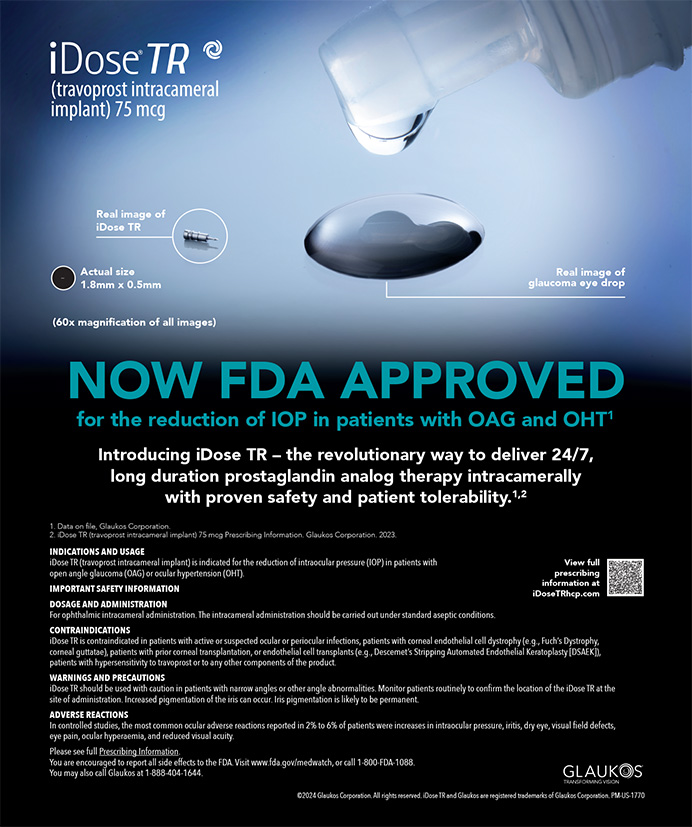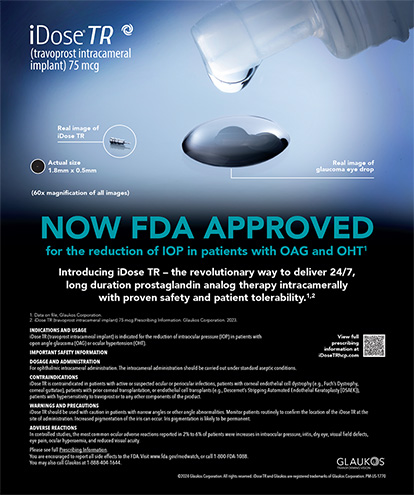The introduction approximately 8 years ago of femtosecond technology in the form of the IntraLase FS laser (Advanced Medical Optics, Inc., Santa Ana, CA) offered refractive surgeons an alternative to mechanical microkeratomes for creating corneal flaps. Since then, numerous studies have compared the consistency and quality of flaps created by both methods.1-4 With the introduction of new femtosecond lasers such as the Femtec (20/10 Perfect Vision, Heidelberg, Germany), the Femto LDV (Ziemer Ophthalmic Systems AG, Port, Switzerland), and the VisuMax (Carl Zeiss Meditec, Inc., Dublin, CA), investigators have begun comparing the flaps created by the different lasers to determine how each affects refractive outcomes.
During the 7th International Congress on Advanced Surface Ablation and Sub-Bowman's Keratomileusis, George O. Waring IV, MD, presented the results of a clinical trial that compared the outcomes of LASIK performed with the IntraLase FS and Femto LDV lasers.5 This article summarizes the study's results.
MAKING THE FLAP
According to Dr. Waring, several differences between the IntraLase FS and Femto LDV lasers affect the flap's formation and how surgeons lift it. The IntraLase FS laser uses a partially mechanical process to dock the ablation head on the patient's eye. In contrast, the surgeon must manually place the Femto LDV's applanation plate to the corneal surface. Because the flaps created with this laser do not have distinct side cuts (a result of the Femto LDV's focal length and low pulse energy, they resemble those made by a microkeratome. The Intralase FS laser creates flaps with true side cuts and allows surgeons to customize the flap's architecture by varying the angle of its edge.
COMPARING CLINICAL RESULTS
In a single-center, randomized, contralateral eye study, Daniel S. Durrie, MD, and his co-investigator, Dr. Waring, used the IntraLase FS and Femto LDV lasers to create corneal flaps in the contralateral eyes of 19 patients (38 eyes) who underwent sub-Bowman's keratomileusis. Masked observers found that both technologies consistently created planar flaps of similar size (9 mm in diameter) and thickness (Femto LDV, 113 ?5 ?m; IntraLase FS, 116 ?5 ?m). By 1 month postoperatively, patients had UCVAs of 20/20 or better in 90 of the IntraLase eyes versus 100 of the Femto LDV eyes (Figure 1). The differences in manifest refraction spherical equivalent and cylinder between the patients' IntraLase and Femto LDV eyes were not statistically significant at 1 month (manifest refraction spherical equivalent, 0.13 vs 0.23; cylinder, -0.38 D for both eyes).
Based on these results, Drs. Durrie and Waring concluded that both lasers safely create consistently sized and shaped planar flaps that facilitate excellent visual outcomes after sub-Bowman's keratomileusis.
ASSESSING THE STROMAL BED
Historically, surgeons have posited a relationship between the smoothness of the stromal bed and the intensity of the femtosecond laser energy delivered to the cornea during the flap's formation. Specifically, lower levels of energy are thought to be conducive to creating smoother surfaces.6
Drs. Durrie and Waring tested this hypothesis by creating corneal flaps on cadaveric eyes with the IntraLase FS (n = 5) and Femto LDV (n = 5) lasers. Next, they scanned the eyes with an electron microscope and asked five masked observers to rate the smoothness of the stromal surface on a scale of 1 (smoothest among all samples) to 5 (roughest among all samples). To the investigators' surprise, the eyes with flaps created by the IntraLase FS (pulsed energy, 0.9 ?J) had smoother stromal beds than those made by the Femto LDV, despite the lower levels of energy delivered by the latter laser's ablation pattern.
The investigators suggested that the difference in the quality of the stromal beds created by the IntraLase FS and Femto LDV lasers could be an artifact of the lasers' respective uses of separated versus overlapping pulses of energy during the flap's formation. Although their findings were microscopically relevant, noted Dr. Waring, the effect of stromal smoothness on clinical outcomes is still uncertain, especially in such a small sample size. He and Dr. Durrie plan to address this limitation as they collect more data for their ongoing study, Dr. Waring added.
CONCLUSION
Early results with the Femto LDV are promising, stated Dr. Waring, but the IntraLase FS currently has the benefit of maturity. As his and Dr. Durrie's study showed, however, both lasers safely created corneal flaps that provided similar outcomes after refractive surgery.
George O. Waring IV, MD, is a fellow in corneal and refractive surgery at the University of Kansas Medical Center and at Durrie Vision in Overland Park, Kansas. He acknowledged no financial interest in the products or companies mentioned herein. Dr. Waring may be reached at (913) 491-3330; gwaring@durrievision.com.
Daniel S. Durrie, MD, is Director of Durrie Vision in Overland Park, Kansas. He is a clinical investigator for Advanced Medical Optics, Inc. Dr. Durrie may be reached at (913) 491-3330; ddurrie@durrievision.com.
Demonstrations of the Ziemer Femto LDV femtosecond laser are available at www.eyetube.net/products/video.asp?smofe and www.eyetube.net/videos/default.asp?keehi.


